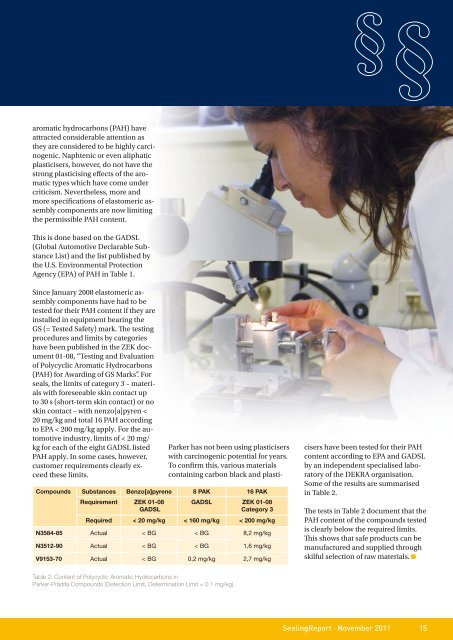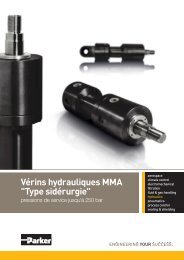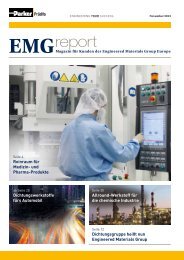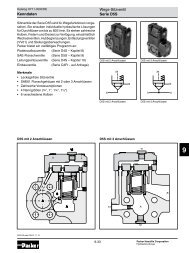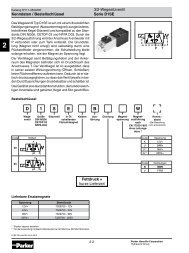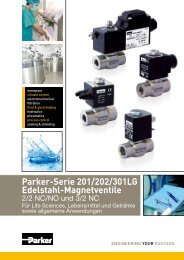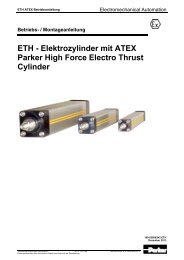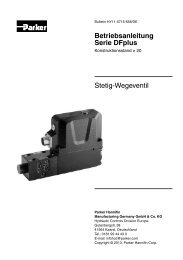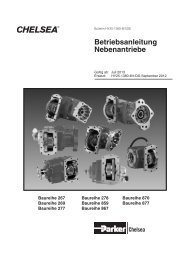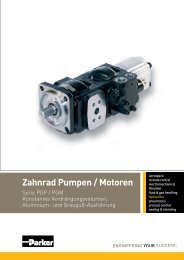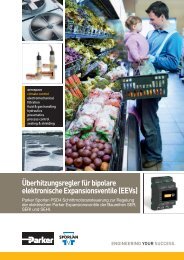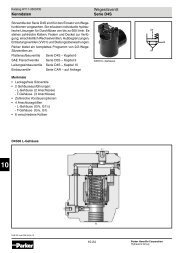Sealing products and legal requirements - Parker Hannifin ...
Sealing products and legal requirements - Parker Hannifin ...
Sealing products and legal requirements - Parker Hannifin ...
You also want an ePaper? Increase the reach of your titles
YUMPU automatically turns print PDFs into web optimized ePapers that Google loves.
aromatic hydrocarbons (PAH) have<br />
attracted considerable attention as<br />
they are considered to be highly carcinogenic.<br />
Naphtenic or even aliphatic<br />
plasticisers, however, do not have the<br />
strong plasticising effects of the aromatic<br />
types which have come under<br />
criticism. Nevertheless, more <strong>and</strong><br />
more specifications of elastomeric assembly<br />
components are now limiting<br />
the permissible PAH content.<br />
This is done based on the GADSL<br />
(Global Automotive Declarable Substance<br />
List) <strong>and</strong> the list published by<br />
the U.S. Environmental Protection<br />
Agency (EPA) of PAH in Table 1.<br />
Since January 2008 elastomeric assembly<br />
components have had to be<br />
tested for their PAH content if they are<br />
installed in equipment bearing the<br />
GS (= Tested Safety) mark. The testing<br />
procedures <strong>and</strong> limits by categories<br />
have been published in the ZEK document<br />
01-08, “Testing <strong>and</strong> Evaluation<br />
of Polycyclic Aromatic Hydrocarbons<br />
(PAH) for Awarding of GS Marks”. For<br />
seals, the limits of category 3 – materials<br />
with foreseeable skin contact up<br />
to 30 s (short-term skin contact) or no<br />
skin contact – with nenzo[a]pyren <<br />
20 mg/kg <strong>and</strong> total 16 PAH according<br />
to EPA < 200 mg/kg apply. For the automotive<br />
industry, limits of < 20 mg/<br />
kg for each of the eight GADSL listed<br />
PAH apply. In some cases, however,<br />
customer <strong>requirements</strong> clearly exceed<br />
these limits.<br />
<strong>Parker</strong> has not been using plasticisers<br />
with carcinogenic potential for years.<br />
To confirm this, various materials<br />
containing carbon black <strong>and</strong> plasti-<br />
Compounds Substances Benzo[a]pyrene 8 PAK 16 PAK<br />
Requirement ZEK 01-08<br />
GADSL<br />
GADSL ZEK 01-08<br />
Category 3<br />
Required < 20 mg/kg < 160 mg/kg < 200 mg/kg<br />
N3584-85 Actual < BG < BG 8,2 mg/kg<br />
N3512-90 Actual < BG < BG 1,6 mg/kg<br />
V9153-70 Actual < BG 0,2 mg/kg 2,7 mg/kg<br />
Table 2: Content of Polycyclic Aromatic Hydrocarbons in<br />
<strong>Parker</strong>-Prädifa Compounds (Detection Limit, Determination Limit = 0.1 mg/kg).<br />
cisers have been tested for their PAH<br />
content according to EPA <strong>and</strong> GADSL<br />
by an independent specialised laboratory<br />
of the DEKRA organisation.<br />
Some of the results are summarised<br />
in Table 2.<br />
The tests in Table 2 document that the<br />
PAH content of the compounds tested<br />
is clearly below the required limits.<br />
This shows that safe <strong>products</strong> can be<br />
manufactured <strong>and</strong> supplied through<br />
skilful selection of raw materials.<br />
<strong>Sealing</strong>Report · November 2011 15


